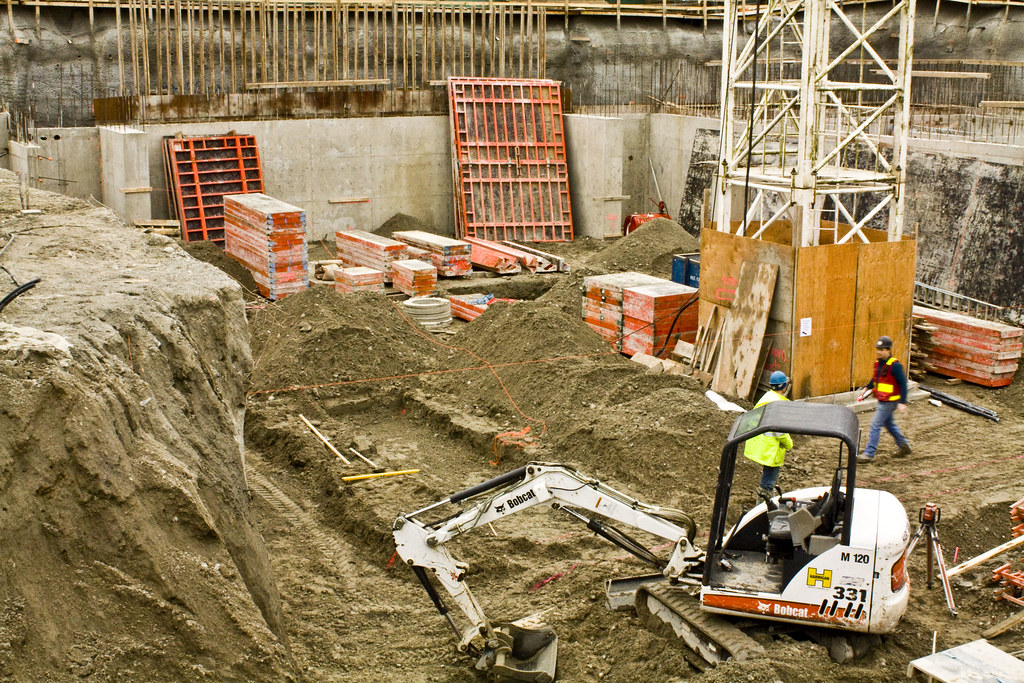
This article by reporter Tiffany Crawford, featuring UBC Sustainability Hub Research Manager, Megan Badri, originally appeared in the Vancouver Sun on June 6, 2025.
University of B.C. scientists are helping to regulate embodied carbon, the total greenhouse-gas emissions from material extraction, and the disposal of materials.
Canada lacks national regulations to assess the construction industry’s embodied carbon, the total greenhouse-gas emissions associated with a product’s life cycle.
However, a team at the University of B.C.’s sustainability hub aims to change that, and help the federal government meet its net-zero emissions targets by 2050 in an effort to limit global warming.
How a UBC Sustainability Hub research report is influencing federal net-zero emissions targets
The hub led a two-year project to tackle the challenges of reducing embodied carbon emissions in construction projects — everything from material extraction and transportation to construction of buildings and disposal of materials — and provide solutions.
Ottawa is planning to update its national building model code with a phased in plan for industry to disclose the embodied carbon footprint of buildings, and the hub’s research will influence those decisions.
A report from one of the hub’s research teams, expected to be made public in a couple of weeks, will make recommendations to Canada’s net-zero advisory body, a group that advises Environment and Climate Change Canada on how to achieve the country’s climate goals.
One of the recommendations will be to develop a national standard on reporting embodied carbon and to create a national database that can be used by local governments and industry, said Megan Badri, research manager at the UBC sustainability hub.
“Guidelines already exist for reducing emissions from use such as heating, cooling and lighting the building but currently we don’t have any federal level regulations asking for reducing emissions from the materials.”
- Megan Badri, Research Manager, UBC Sustainability Hub.

The report also recommends the federal government prepare and support the industry and lower levels of government for the transition, and ensure funding is in place.
To expedite the process, the federal government should draw on international models, such as those adopted in France and the Netherlands, the report adds.
In Canada, buildings rank as the third-largest contributor to the country’s total emissions, accounting for about 12 per cent of national emissions. However, the report notes that this only includes operational emissions and is estimated to be closer to 18 per cent if embodied carbon emissions are included.
Some of the challenges, said Badri, include limited market availability of low-carbon building products in Canada and that builders often prefer conventional materials because of perceived risks to costs and schedules. Badri added that there are few incentives to select low-carbon alternatives.
With no national regulation, local efforts are highly varied and some municipalities don’t include embodied carbon in their policies, the report says.

UBC Sustainability Hub and B.C. municipalities are working together to minimize construction waste
The team has also been working with several B.C. municipalities, including Victoria, Kamloops, Nelson, Squamish and Richmond, to include plans for embodied carbon in their climate policies.
“Already lots of climate action is happening in different levels of government, but there’s less co-ordination for all this policy across Canada,” said Badri.
After rules come in for industry to disclose the carbon emissions from the materials being used, the next phase would be to include the emissions from maintaining the materials, for example upgrades, and then make recommendations on how to reduce those emissions, she said.
Strategies could include using different materials like low-carbon concrete and minimizing waste during construction and demolition.
Some of this work is already being done in Metro Vancouver, including the cities of Vancouver — which introduced embodied carbon emissions caps, reporting and targets of 40 per cent reduction in embodied carbon by 2030 — and Richmond. Metro is also assessing requirements for embodied emissions in construction materials.
In Richmond, the hub worked on updating the city’s demolishing bylaw so materials from demolished buildings are salvaged and recycled.
Landfills are filling up with construction waste that has valuable use in the circular economy, says Marcos Alejandro Badra, program manager of circular economy for the City of Richmond.
Badra says they worked with UBC to engage builders, demolition companies and the recycling companies to identify new ideas. For example, salvaged wood can be repurposed into flooring, insulation and roofing among other uses.
“We are looking to not just reduce but reuse significantly because the majority of materials going to the landfill here is wood lumber. It’s like sending money to the landfill because these materials are very valuable and can be recovered in the region."
- Marcos Alejandro Badra, Program Manager of Circular Economy, City of Richmond.
Expanding embodied carbon policies and bylaws for a circular economy
Staff will report back to council sometime this year on a set of recommendations and guidelines for embodied carbon policies.
UBC grad Yumna Jilani, who worked on the Richmond bylaw for the sustainability hub, said the biggest challenge is building stronger end markets for reclaimed materials.
“Where do all these reclaimed materials go? That’s the next challenge — turning reuse from an idea into a functioning system for a circular economy,” she said.
"I think expanding the bylaw to include all building types and placing more emphasis on reuse and deconstruction would have a significant impact in reducing embodied carbon emissions. These changes support more sustainable demolition practices and help shift the industry toward circularity.”
- Yumna Jilani, UBC Grad, UBC Sustainability Hub.
In the fall, Richmond will also start a pilot project to have builders voluntarily provide data on embodied carbon. Badra expects there will be success with the program given the high interest the city has received from industry wanting to take part in the plan.
